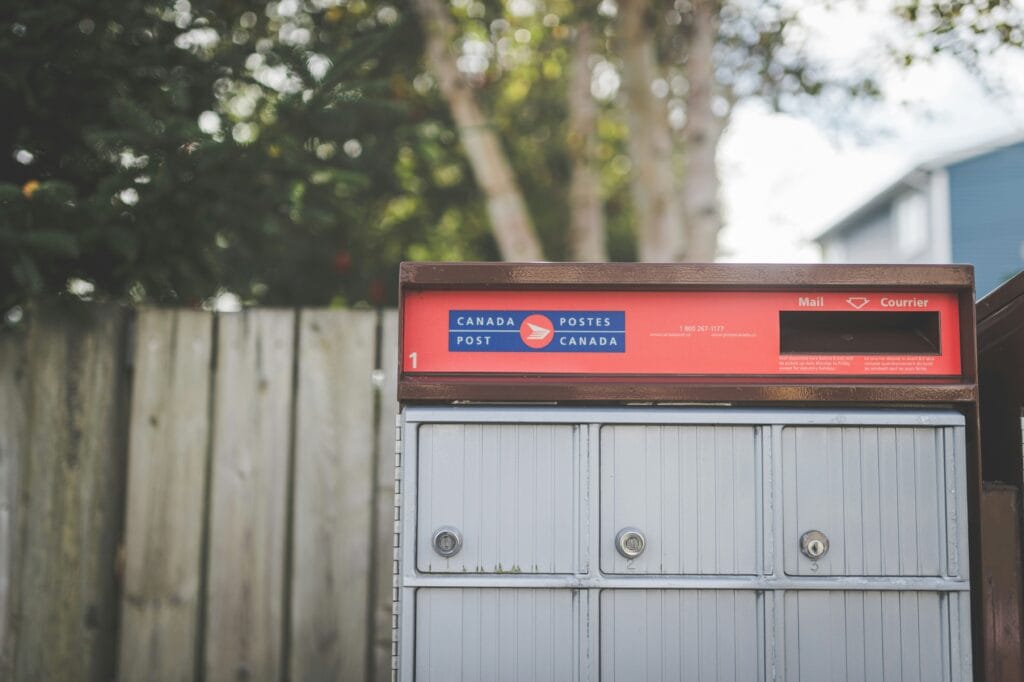If you thought order confirmation emails were just those polite “Hey, you bought something—congratulations!” notes, buckle up. This week, we’re peeling back the digital receipt to reveal why your order confirmation can be a powerhouse sales strategy—and why ignoring it is basically leaving money on the table.
Sure, your customer just clicked “Buy Now,” adrenaline still pulsing. But what if that little order confirmation page could nudge them right back into another purchase? Or at least persuade them a bit more down your funnel? As it turns out, sprinkling some strategic magic into your order confirmation process isn’t just possible—it’s essential for any eCommerce marketer or manager who doesn’t want to repeat the phrase, “Why are our sales flat?” for the fourth Zoom call this month.
So, whether you’re here for the latest Shopify and AI news, the drama of Canada’s endless shipping mishaps (seriously, moose country?), or just because you need that caffeine-fueled jolt of eCommerce insight, you’re in the right place. Grab your mug, ignore that “Try decaf!” suggestion, and get ready to transform your humble order confirmation from an afterthought into your store’s secret weapon.
What’s Brewing This Week?
- The real reason order confirmations should top your sales strategy checklist
- AI-powered shopping assistants and their avalanche of “wow” (and “wait, what?”)
- Why physical stores are suddenly cool again—yes, we’re still in 2024
- Canada’s shipping chaos: The saga continues
- How new AI tools are crushing spam and boosting actual deals
Ready? Because this week’s eCommerce news isn’t just hot—it’s practically frothing over. Let’s get into the strategies your competition hopes you’ll ignore, starting with the unexpectedly mighty order confirmation.

The Untapped Potential of Order Confirmations
Ask most eCommerce owners about their order confirmation sales strategy, and you’re likely to get one of two responses: a blank stare, or a sheepish admission that it’s basically “Wow, thanks, here’s your receipt, goodbye.” But here’s the plot twist: those dull-as-dishwater confirmations are hiding one of the most under-utilized sales levers in your entire store. Think of order confirmations as the forgotten middle child—often overlooked, but absolutely bursting with unrecognized potential.
From Routine Receipt to Sales Goldmine
Consider this: right after a customer makes a purchase, they’re riding a feel-good wave of anticipation. That’s the dopamine rush kicking in. It’s also the exact instant when they’re most glued to every word you send their way—making your confirmation email or screen nothing short of prime real estate. So why squander it on a lifeless “Order received, see ya never”?
According to recent research, order confirmation emails skyrocket above regular marketing emails when it comes to open rates. Translation: your audience isn’t just opening them—they’re actually paying attention. This is your moment not just to inform, but to delight.
Low Effort, Big Rewards
Here’s the kind of strategy that would make even your laziest competitor look bad:
- Add a quirky thank you note—something that sounds vaguely like an actual human wrote it.
- Slip in a tailored suggestion for another product (yes, based on what they just bought—the creepier, the better).
- Tempt fate with a surprise discount for their next order. Who says no to a coupon?
- Bonus points for embedding a GIF so delightful it makes customers snort coffee out their noses.
Most brands never bother updating their confirmation templates. They’re too busy chasing the Next Big Thing to realize there’s magic right under their noses. But if you’re willing to spend just a few minutes injecting life into that order confirmation, you’re already miles ahead of the pack.
Memory Makers and Brand Builders
Don’t believe it? Just ask anyone who’s ever received a genuinely funny or personal confirmation (yes, the infamous sock company with left/right foot jokes immediately comes to mind). It’s the tiny, human details that ingrain your brand in someone’s memory—and keep them coming back. You’re not simply fulfilling an order; you’re creating a moment.
So before you dismiss those automated messages as a behind-the-scenes chore, do yourself a favor: treat your order confirmation sales strategy as the secret weapon it is. Because in eCommerce, it might just be the lowest-hanging fruit with the highest possible payoff.
The Chatbot as Your Next Sales Rep: Order Confirmation Sales Strategy Gets a Makeover
Picture this: You’re just joking around with a chatbot, asking for pizza recipes or maybe venting about your latest Zoom mishap—when suddenly, you can buy that “I survived another meeting” mug without ever leaving the chat. No, this isn’t some futuristic fever dream; it’s Shopify and OpenAI’s latest magic trick, letting eCommerce brands jump right into conversations and slap a checkout button in your virtual lap. Talk about an “add to cart” glow up.

Why Order Confirmation Sales Strategy Is Having a Moment
Traditionally, the order confirmation email has been the sales equivalent of an awkward goodbye hug—thanks for your money, see you never! But if you haven’t revisited your order confirmation sales strategy lately, you’re about to get left behind. Order confirmations are quietly becoming prime real estate for boosting repeat sales, thanks to—drumroll—AI and conversational commerce.
- Instant Upsells: Instead of hoping customers bother to open an email, your chatbot can suggest that matching hat—or three—right after checkout. Subtle? Maybe not, but neither is your uncle at Thanksgiving, and he seems to do just fine.
- Frictionless Experience: Forget the labyrinth of “Confirm Email” buttons, forgotten passwords, and tabs stacked like pancakes. Chatbots in Shopify-powered conversations make adding more goodies almost… too easy. Your “low conversion rate” nightmares? Consider them ghosted. (Source)
- When Timing Is Everything: We’ve all been there: the dopamine hit of a purchase fades, and suddenly you’re guilt-scrolling social media. But what if your order confirmation wasn’t just a receipt, but the start of another delightful shopping journey? That’s the power play here—real-time recommendations and exclusive deals, while the shopping high is still fresh.
No More “Shouting into the Internet Void”
Sure, the internet is crowded, and most brands are just desperately hoping their Black Friday deals get noticed amidst a sea of “UNBELIEVABLE SAVINGS!!!” Now, imagine if instead of hoping customers stumble onto your site, you’re waiting in the world’s busiest chatroom, with instant purchase options merged right into the conversation. For Shopify merchants, the chance to reach millions through ChatGPT isn’t just about playing catch-up. It’s about being the first to greet shoppers before they wander somewhere else.
Does This Blur the Line Between Help and Hard Sell?
Let’s get real—nobody wants their chatbot to morph into Clippy, shoving upsells into every message. But handled right, conversational order confirmations feel less like a sales pitch and more like a genuinely helpful nudge: “Hey, you ordered socks—want them in every color, on sale?” The secret sauce? Context, relevance, and never pushing harder than a millennial trying to cancel a gym membership.
Bottom line: the order confirmation sales strategy is getting a 21st-century upgrade. Whether it’s Shopify’s new checkout-by-chat features or Etsy’s handmade hustle (read more here), the “order confirmation” is no longer the end of the customer journey. It’s a whole new start—and your chance to make the next order feel irresistible (and maybe dangerously easy).
The Boom-and-Bust Cycle of Ecommerce: Why Your Order Confirmation Isn’t the End of the Story
Let’s face it: ecommerce can sometimes feel like a rollercoaster operated by someone who’s just had a triple espresso and a minor existential crisis. Picture this—September rolls around, the digital shelves are wiped out in a sales frenzy, and then… an eerie calm. Cue customers collectively entering a “shopping hibernation,” right after they’ve snagged everything from discounted headphones to the last air fryer in existence. It’s so predictable it’s almost poetic—like Black Friday without the long lines or, let’s be honest, any actual pants.
But before you start assuming this is just another seasonal blip, consider the real numbers. Ecommerce, far from cooling down for good, is projected to grow by a massive $180 billion. That’s not just people panic-buying plushies during a midnight sale—that’s a global shift, powered by easier digital payments, faster internet, and people finally realizing you can order pizza from your sofa without risking small talk with a stranger (source).
Order Confirmation: A Sales Strategy, Not a Finish Line
Here’s where it gets interesting. While everyone fixates on spikes and slumps, the brands truly winning the ecommerce game aren’t just chasing the next big sale—they’re turning that “Order Confirmed!” moment into a serious sales strategy. You know the email: subject line screaming “Yay, your thing is on the way!” and you, briefly euphoric, before you wonder how long you’ll be refreshing that tracking link. But smart brands realize this is their golden window—not just to pat you on the back, but to cross-sell, upsell, and win repeat business, even before your package has left the warehouse.
After all, in a shopping landscape that sometimes resembles a digital flash mob, the order confirmation page is one of the few guaranteed moments you have your customer’s undivided attention. Ignore it, and you’re tossing money out the (virtual) window.

Reverse Evolution: The Curious Case of Dagne Dover
Take a brand like Dagne Dover. These folks started in the depths of pure-play ecommerce, riding the online wave as if real-world stores were a thing of the past. Fast-forward: they’re now opening physical stores and expanding into retail, basically reverse-evolving from nimble digital goldfish into big-league mammals—Pokémon-style (source).
It’s not a sign that ecommerce is running out of steam. It’s a sign that brands who understand true multichannel engagement—those that master every customer interaction, from cart to confirmation—are the ones pulling ahead. Because let’s face it, nobody wants to be the brand selling lemonade at the beach when all the customers have moved to the skate park.
What the Data Shows: Sales Surges, “Nap” Phases, and Smart Adaptation
Recent seasonal sales data proves the pattern: massive spikes, dramatic slow-downs, then a reset before the next wave. It’s a cycle—one that can feel like chasing your own tail unless you’re thinking beyond immediate sales. Brands acing this game use those quieter “nap” moments to refine their post-purchase experience. Tweaking the order confirmation page, optimizing for cross-sells, and laying the groundwork for the next surge all happen while the rest of the ecommerce world snoozes (source).
So while the world’s attention is on who scored the best discount, the savvy eCommerce marketers, owners, and managers are busy turning every post-checkout ping into another opportunity for growth. Because, let’s be honest—“Thank you for your order” is just the beginning, not the punchline.
When Order Confirmations Meet Chaos: The Unseen Sales Strategy
One minute you’re refreshing your inbox for that sweet “Order Confirmed!” dopamine hit, the next – thanks to union strikes or surprise policy changes – your order’s spirit is willing, but the flesh (read: package) is anywhere but your doorstep. Welcome to 404 Error: Order Confirmation Sales Strategy Edition, where a confirmed order doesn’t always mean a happy customer (or a smooth conversion funnel).
Canada Post Strikes: When the Mailbox Goes MIA
Let’s just say it: if your business relies on Canada Post, right now you’ve got more plot twists than a soap opera. Union strikes and planned service cuts are causing the kind of “out for delivery” drama every eCommerce manager dreads. Overnight, birthday cards, returns, urgent orders – the whole lot are suddenly “living their best life in limbo,” forcing brands to rethink exactly what an order confirmation should promise (source).

No Such Thing as “Guaranteed Delivery”
Traditionally, that lovely “thanks for shopping with us!” email is the start of a smooth, speedy relationship. But what happens when the entire logistics chain dissolves? For customers, it’s like buying a concert ticket and learning your favorite band is stuck in airport security. For brands, it signals a critical need to update – not just the messaging, but the whole order confirmation sales strategy across the board:
- Transparency is non-negotiable: Faking optimism gets you nowhere. “We’re experiencing delays due to ongoing strikes…” beats “your package is en route!” when, in fact, it’s doing yoga in a depot.
- Reinforce trust: Order confirmation is the time to over-communicate. Give updated ETAs, real-time tracking, even a status on backup shipping partners. Your customer’s anxiety level will thank you.
- Lean on creative fulfillment: Some brands turned to the likes of Amazon Shipping (read how a kids’ subscription box pivoted), but beware: you might trade delivery headaches for less control, brand dilution, or “by Amazon Basics” syndrome.
Regulatory Plot Twists: Lululemon’s Stretch Test
For the big leagues, these curveballs can be even gnarlier. Lululemon got a harsh reality check when Canada axed the “de minimis” rule (that’s bureaucrat-speak for ‘bring in a bit of stuff tax-free’), stretching their fulfillment ops thinner than their signature yoga pants (source). This doesn’t just mean delayed tights; it changes how brands communicate value and manage customer expectations after “Order Confirmed.”
The New Normal: Adapting Your Order Confirmation Sales Strategy
If you’re an eCommerce leader, here’s what rises to the top of the order confirmation checklist, especially during logistics meltdown season:
- Automate proactive updates: Don’t wait for the customer to check in. ‘Bad news early’ beats angry tweets every time.
- Flexible fulfillment promises: Build in buffer times and set realistic expectations. It sounds less sexy, but it beats refunding half your sales.
- Keep it human—and if you must, a tad funny: “Your order is delayed by carrier pigeon” lands better than silence.
Ultimately, the real order confirmation sales strategy is about trust management in chaos. Because the only thing more dangerous than a promise unkept? A customer whose yoga pants, birthday cards, and subscription boxes are all stuck “out for delivery” till next fiscal year.
The Future of the Order Confirmation Sales Strategy: Why Ugly Screenshots Are Over
Remember the days when you’d buy something online and the order confirmation page was basically an awkward stack of text and—if you were lucky—a blurry, badly cropped product photo? Well, MageMontreal is here to banish those bland after-purchase vibes. Their latest move? Using AI-powered imagery to turn every touchpoint of the customer journey—including the humble order confirmation—into a mini shopping experience that actually sells.
Why Your Order Confirmation Page Deserves an Upgrade
Let’s get real: order confirmation pages have been the digital equivalent of a handshake and a sticky note. “Thanks for your order. Don’t call us, we’ll email you.” But in 2024, you’re leaving money on the table if that’s all you give. MageMontreal’s AI imagery innovation lets stores present products not just as static “You bought this, congrats,” but in dynamic, tailored visuals—think your newly purchased sneakers staged on your favorite rug, or last-minute add-ons that actually make sense.
Personalization—More Than a Buzzword
- Next-level visuals: Custom images that feel less like stock photos and more like a curated Instagram post—making the confirmation page a natural upsell pitstop.
- Relevant recommendations: Show products in real-world settings, so “complete your look” suddenly feels like, “Hey, this belongs in my living room.”
- Trust-boosting accuracy: When people see products in lighting and contexts that match their expectations, return rates and buyer’s remorse drop. Nobody likes surprise teal.

When the Order Confirmation Page Sells for You
Here’s where it gets clever for your order confirmation sales strategy: using AI, you can adapt what’s shown based on what’s in the cart, previous purchases, and even color palettes that shoppers interacted with. This tackles the “impulse buy” slot with a relevant, visually irresistible option—no circus-level cross-sells, no potato-head photos (unless your shoppers are into that).
Key Takeaway for eCommerce Marketers
Modern order confirmation sales strategy is about treating the “thank you” page as more than a receipt. Thanks to tools like MageMontreal’s AI, you’re not just confirming—you’re continuing the customer journey, tempting intuition and trust, and, let’s be honest, probably selling them that lamp (hopefully minus the llama).
Trust Takes a Hit: Amazon’s Pricey Lesson in Order Confirmation Sales Strategy
If you thought your last order confirmation email was suspenseful (“Your package is out for delivery… psych! It’s delayed”), imagine being Amazon right now, swimming through a $2.5 billion settlement over its “deceptively” sticky Prime sign-ups. Yes, billion with a capital “B”—just the kind of fiscal drama your CFO daydreams about (as a cautionary tale).
Order Confirmation: More Than Just a Receipt
Order confirmation used to be simple: you bought a thing, you got an email. Maybe a confetti emoji if your marketer was feeling spicy. But now, that digital handshake is prime real estate—for building trust, upselling, or (if you’re Amazon) winding up on the FTC’s radar for making “goodbye” a Where’s Waldo–level quest.
- Clear, honest messaging: If your order confirmation page looks like a Vegas slot machine of upsells and mysterious small print, rethink it—unless you want to share Amazon’s legal spotlight.
- Easy navigation: Don’t trap your customers in a subscription labyrinth. No “minotaur at every turn” vibes, please.
- Transparency earns sales: When shoppers trust your communication, they spend more—and feel good about it. Cloud of suspicion? Not so lucrative.
Deal Wars and the Trust Tug-of-War
With Walmart launching rival promos and eBay stealthily snapping up social marketplaces (source), the eCommerce universe is in a perpetual battle for attention—and loyalty. For eCommerce marketers, this means there’s never been a worse time to test customers’ patience at the most pivotal touchpoint: the order confirmation.
- Lesson learned: Your order confirmation isn’t a formality—it’s the last impression before your customer decides whether you’re a brand or just spam.
- Automation ≠ Manipulation: AI and automated flows are only as good as the trust they foster. Shoppers know when they’re being led in circles. And you can’t Netflix-binge your way out of a regulatory headache.
What’s Next?
As the power players scramble and regulators crank up the scrutiny, remember: your order confirmation sales strategy sets the tone for the entire relationship. Make it count, make it clear, and make it human—because nothing tanks sales like a whiff of deception (or a digital minotaur at the checkout).
The Battle for a Cleaner Internet: What Google’s Spam Updates Mean for Your Order Confirmation Sales Strategy
Let’s face it: searching for anything online these days can feel like walking through a minefield of clickbait, SEO-bloated nonsense, and the occasional “buy crypto NOW!” email. Banana bread recipes aren’t safe, and neither is your eCommerce strategy—unless you keep up with the seismic shifts happening on the digital frontlines.
The latest Google spam updates are making a hard sweep for authenticity and user trust. Gone are the days when keyword stuffing and sketchy backlinks might catapult a site—or even an order confirmation email—onto page one. Now, Google’s AI can sniff out manipulation faster than you can say, “Did someone copy-paste this from Wikipedia?”
It’s Not Just Your Website—It’s Your Emails Too
If you thought email was a safe haven for not-so-sneaky sales tactics, think again. Google’s new Postmaster Tools act like the report card you always dreaded: “Did your order confirmation look spammy?” For eCommerce marketers, this isn’t just tech theater—it’s an unavoidable compliance test. Stay flunk-free, or risk your crucial messages (like order updates) diving straight into spam oblivion.
Ads That Actually (Gasp) Matter?
Meanwhile, Pinterest’s “Top of Search” ads and Google’s “Ask Stores” AI are both trying to make online shopping feel less like a swap meet and more like a curated boutique. Instead of blasting buyers with irrelevant ads in their feed or cluttering their order confirmations with upsell noise, the focus is on actual relevance. Yes, someone finally realized that showing trampolines to people shopping for wedding cakes might not be great targeting.
Relevance, Trust, and a Smarter Order Confirmation Sales Strategy
So, what’s the takeaway for your order confirmation sales strategy? Tighten up those messages. The bar has officially been raised:
- Prioritize compliance—use tools like Postmaster to keep your order confirmations in the “Primary” tab, not the abyss.
- Cut the clutter—shoppers can spot generic upsells faster than Google’s AI can label them irrelevant.
- Lean into relevance—take cues from Pinterest’s ad approach: only pitch what truly fits the purchase.
- Embrace transparency—AI-powered chat on Google Shopping (here’s how it works) is about delivering value, not hiding the ball.
If you want your order confirmation emails to boost sales instead of bounce into the void, play by the new rules. Give your customers something they actually want—besides a suspicious banana bread recipe, of course.
Wrapping Up: Are You Missing Out on Order Confirmation Sales?
Another wild week in eCommerce has officially come to a close—and wow, the “order confirmation sales strategy” truly stole the show. Who knew that humble thank-you email could moonlight as a revenue generator? If you’ve been treating order confirmations like digital receipts—boring, bland, and banished to the spam folder—you might want to rethink your play. Seriously… when was the last time you looked at yours and felt even a flicker of excitement?
What’s Next for Your eCommerce Playbook?
Let’s face it: none of us want to miss out on sales hiding in plain sight. But are order confirmations really your next secret weapon, or just another thing to add to your “do it someday” list? Maybe you’ve already tested some cross-sell magic, or maybe your “thanks for shopping” is still as dry as week-old toast. Either way, it’s time to ask:
- Could your current order confirmation emails pull double duty and drive extra sales?
- Have you considered adding an enticing offer, product recommendation, or exclusive coupon right inside the confirmation?
- Or are you still sending bland, transactional emails and wondering why the “after-purchase” crickets won’t stop chirping?
- And hey, would you trust your order confirmation to a chatbot—or do you think AI shopping chats are just a clever way to end up with 12 pairs of novelty socks?
With AI blurring the line between shopping and chatting, retailers striking for relevance, and Google banishing spammers like old leftovers, it’s clear: the eCommerce game isn’t slowing down. The real question is, will your order confirmation sales strategy keep up—or will it fall behind faster than abandoned carts on a Monday morning?
Let’s Hear from You: Share Your Wins, Fails, & Wild Ideas
Your turn: what’s your biggest “aha!” from this week’s roundup? Did you get inspired to overhaul your confirmation emails—or do you think the real gold is somewhere else entirely? Drop a comment, share your tales, and let’s swap our best (and worst) order confirmation moves below. Because if there’s one thing we learned this week, it’s that growth in eCommerce is all about testing, learning…and possibly buying too many socks by accident.
Ready to level up your order confirmation sales strategy? Or just here for the shopping drama and bad puns? Either way, we want to hear from you. Until next week—keep sending those order confirmations that actually sell!










